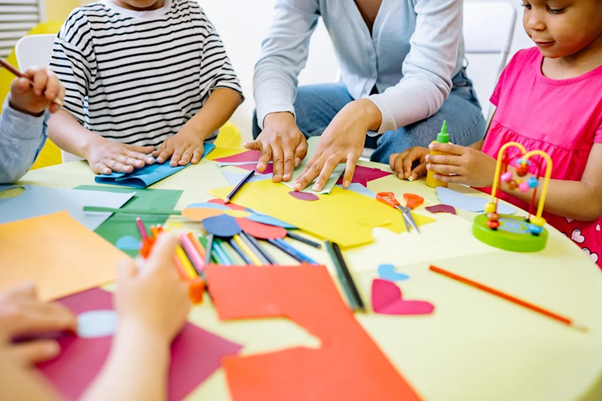Why do children need interactive learning more than ever in the current environment?

A typical student’s day these days may consist of listening to their instructor while seated at a desk, but it also very likely involves hands-on activities, game-based learning, and digital intervention. It may be argued that technology has made learning more interesting than it has ever been. Classrooms now have a new purpose. The new norm for educating the next generation of teachers is interactive learning, but what is interactive learning really? What makes it better for children? Let’s investigate that in this piece.
What is interactive learning?
Interactive learning is a kind of instruction that actively involves kids in the learning process through participation, interaction, and hands-on activities. Its goals are to pique kids’ curiosity, broaden their comprehension, and promote their general development. Creating an immersive and stimulating learning environment via the use of a range of tools, technologies, and methodologies is a common practice in interactive learning for children.
The Importance of Interactive Learning for Children
- Engaging- Children who engage in interactive learning activities use several senses at once. In addition to reading and listening, students are also observing, taking part, interacting, and experiencing. Their developing brains are used in many ways at this level of involvement, which facilitates learning retention.
- Collaboration and Communication- Children are usually encouraged to cooperate in teams, exchange ideas, and obtain knowledge from one another through interactive learning approaches or preschool teaching techniques. Cooperative tasks, dialogues, and cooperative learning exercises improve social, communication, and teamwork abilities. Because interactive learning involves children actively in the learning process and promotes their general development, it is beneficial to them.
- Developing Interest- Interactive learning process methods commonly employ activities, puzzles, exercises, and other captivating tasks that grab children’s attention and pique their interest. This sustains their interest and motivation throughout the learning process. Children are more likely to be enthusiastic and involved in their education when they enjoy what they are doing.
- Fun Learning- Naturally, there are a lot of variables at play when it comes to learning. There are benchmarks, assessments, educational milestones to meet at particular periods, and a curriculum to adhere to. However, many people overlook the importance of enjoyment in maintaining children’s attention and memory for knowledge. Children might feel more joyful and content when they are learning through interactive means. Fun appeals to some of their basic human needs, so it gives them more chances to laugh, communicate, work together, and stay motivated.
Critical thinking- Children can analyse information, think critically, and solve issues through interactive learning. It presents them with realistic scenarios, challenges, and puzzles that call for critical thinking, judgement, and reasoning. Children who actively participate in problem-solving activities develop their cognitive abilities and grow into autonomous learners. They foster a love of learning, positive attitudes towards education, and the fundamental skills needed for lifelong learning. Interactive teaching methods provide students the skills they need to meet the changing demands of the modern world while also laying a strong foundation for future academic achievement.


